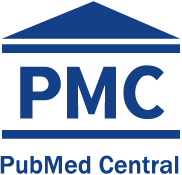Demand for training and availability of health science professionals in Peru
DOI:
https://doi.org/10.17843/rpmesp.2015.321.1573Keywords:
Training, Capacity building, Delivery of health care, Developing countries, Health manpowerAbstract
Objectives. To describe the availability and demand of professional training programs for eight health science professions in Peru. Study the profiles of the physicians, nurses and midwives that these programs train and their competencies to work at the primary health care level. Materials and methods. Cross-sectional study using data on the volume of applicants, students and graduates of these eight professional training programs during the period 2007 - 2011. In addition, the curricula of professional training programs for physicians, nurses and midwives from public and private universities were analyzed, along with competency profiles developed by Professional Colleges and the Ministry of Health. Results. Admission rates in public and private universities vary by program: 4% and 28% respectively for medical schools, and 18% and 90% for nursing. Graduation rates were estimated at approximately 43% and 53% of students entering medicine and nursing training programs respectively. Contrasting the profiles of recently graduated professionals in medicine, nursing and midwifery, with the skills required by the Ministry of Health for professionals working in primary care the first level of care, indicate that these recently graduated professionals are not necessarily or specifically trained to work in primary care. Conclusions. Demand for professional training in health sciences exists and its supply is met predominantly by private universities. Competency profiles developed by the MOH for the basic professional health team in primary care shows a clear disconnect regarding the current supply of trained professionals.Downloads
Download data is not yet available.
Downloads
Published
2015-04-01
Issue
Section
Research Articles
How to Cite
1.
Jiménez MM, Mantilla E, Huayanay-Espinoza CA, Gil K, García H, Miranda JJ. Demand for training and availability of health science professionals in Peru. Rev Peru Med Exp Salud Publica [Internet]. 2015 Apr. 1 [cited 2025 Aug. 2];32(1):41-50. Available from: https://rpmesp.ins.gob.pe/index.php/rpmesp/article/view/1573





























